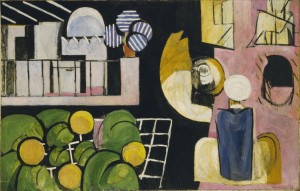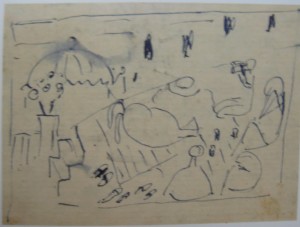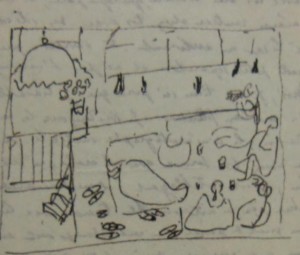


Matisse conceived this “souvenir of Morocco” in 1912, stretched a canvas for it in 1913, and returned to the composition late in 1915, only to start again on a new canvas in early 1916. Black is the principal agent, at once simplifying, dividing, and joining the three zones of the canvas: the still life of melons and leaves on a gridded pavement, bottom left; the architecture with domed marabout, top left; and the figures, at right. Next to a seated Moroccan shown from behind, the large curving ocher shape and circular form derive from a reclining figure in the sketches. Above the shadowed archway, figures in profile may be discerned in the two windows: at right, the lower part of a seated man; at left, the upper part of a man with raised arms. Matisse built up the surface with thin layers of pigment, the color of the underlying layers modifying those on top. Painter Gino Severini reported that “Matisse said . . . that everything that did not contribute to the balance and rhythm of [this] work, had to be eliminated . . . as you would prune a tree.”
Leave a Reply